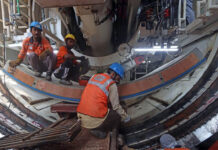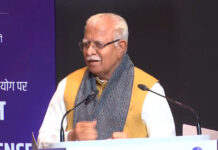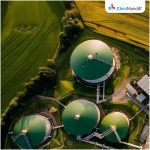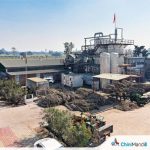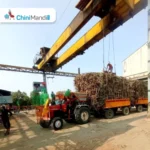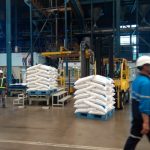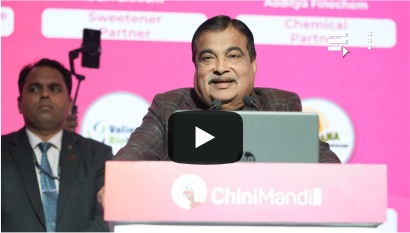As the sugar industry prepares for the upcoming 2025-26 season, ChiniMandi spoke with Alok Saxena, Executive Director & Unit Head of the SPE Division (GSMA) at Zuari Industries Limited, to discuss the key challenges and opportunities shaping the industry’s future. Saxena highlighted the pressing issues faced by the sector and emphasized the steps needed to address these challenges, including the modernization of mills and the adoption of artificial intelligence (AI) to improve efficiency and sustainability. He also shed light on the promising outlook for the 2025-26 season and Zuari’s commitment to sustainability through the adoption of Zero Liquid Discharge (ZLD) in its ethanol facilities.
In an interview with Prakash Jha, Editor of ChiniMandi, Alok Saxena discussed the various challenges and opportunities shaping the sugar and ethanol industry.
Q.What are the current challenges that sugar and ethanol industry is facing, and what steps need to be taken to address that?
Ans – The sugar and ethanol industry face significant challenges that require coordinated action. We’re dealing with low sugarcane productivity compared to global standards, particularly as the wonder variety Co-238 declines without a fully established alternative. High production costs due to low sugar recovery rates and inefficient technology compound these issues, while water scarcity and climate change create additional operational complexities.
To address these challenges, we need focused efforts on modernization of mills to improve efficiency and reduce costs. Promoting ethanol production is crucial for managing excess sugar stocks while contributing to energy security. We require stable policy support for long-term investment planning, increased R&D investment for technological advancement, and adoption of sustainable practices like drip irrigation and crop rotation.
Diversification into alternative revenue streams including bioenergy, compost, and specialty sugars will improve profitability. Most importantly, collaboration between government, industry stakeholders, and farmers remains essential for addressing these challenges sustainably.
Q. Based on current trends and preliminary indicators, what is your outlook for the 2025-26 season in terms of production?
Ans – Based on current trends and preliminary indicators, I’m optimistic about the 2025-26 season. The Indian Sugar and Bio-Energy Manufacturers Association (ISMA) projects an 18% surge in India’s sugar production to 34.90 million tonnes, driven by favorable monsoon conditions that have boosted cane yields and acreage.
Key producing states – Uttar Pradesh (10.25 million tonnes), Maharashtra (13.26 million tonnes), and Karnataka (6.61 million tonnes) – are expected to drive this growth. Notably, we anticipate 5 million tonnes of sugar being diverted for ethanol production, up from 3.5 million tonnes in the current season. There’s also potential for 2 million tonnes of exports, subject to government approval.
Q. India plans to finalise standards for 27% ethanol blending (E27), how do you expect this new norm to benefit the sugar sector?
Ans – The new norm of 27% ethanol blending will significantly benefit the sugar industry in several transformative ways. The government’s push for 27% blending creates unprecedented opportunities for our industry to produce and supply more ethanol, providing additional revenue streams that finally reduce dependency on sugar production alone. This diversification is particularly valuable because ethanol production can be more profitable than sugar production, especially when sugar prices are low, as the government’s pricing policies prefer ethanol production from cane juice.
One of the most significant advantages will be the reduced impact on the cyclicality of the sugar industry in case of bumper cane crops. This diversification will help us manage excess sugar production and maintain stable sugar prices in the market, providing much-needed predictability to our business operations. Also, the industry will generate more direct and indirect employment opportunities and contribute meaningfully to the local economy, particularly in rural areas where our operations are concentrated.
From an environmental perspective, higher ethanol blending can help reduce greenhouse gas emissions and dependence on fossil fuels, resulting in a cleaner environment and aligning with India’s climate commitments. We have strong policy support through key government initiatives including the National Policy on Biofuels 2018, which allows conversion of sugarcane juice and B-heavy molasses to produce ethanol, the Ethanol Blended Petrol Programme that aims to achieve 20% ethanol blending in petrol by 2025 with plans to expand blending to other sectors, and financial assistance for establishing ethanol production plants and promoting ethanol production from non-edible agricultural residues.
However, we must acknowledge challenges including raw material availability concerns, as supply of sugarcane and specific grains may limit scalability, and the need for additional capacity and infrastructure for ethanol production and storage facilities.
The move to attain 27% ethanol blending could prove to be a game-changer for the sugar sector. It will allow sugar mills to diversify revenue through increased ethanol production, reducing reliance on sugar prices and limiting impact of cyclical market fluctuations.
Ethanol from cane juice is often more profitable, especially during periods of sugar surplus. This shift can also prove to be rural employment intensive and will result in lower greenhouse gas emissions. Government schemes like the National Policy on Biofuels and the Ethanol Blended Petrol (EBP) programme are aiding this transformation. Some challenges remain, however. Raw material availability and infrastructure expansion to name a few. Despite these, ethanol blending will merge sustainability with profitability in the long run.
Q. Sugarcane remains vital for India’s ethanol ambitions, but what innovations or policy measures are most needed to sustain cane supply as demand for ethanol grows?
Ans – To sustain cane supply for increased ethanol growth, several innovations and policy measures are crucial for our industry’s future. Innovations and R&D are absolutely essential for establishing technologies for multi-feedstock distilleries. We need availability of cheap and reliable measures to implement technologies like satellite monitoring, IoT sensors, and AI-driven advisory systems to enhance crop yields, reduce waste, and promote sustainable farming practices.
Sustainable agriculture practices must be promoted, including integrated pest management, organic farming, and crop rotation to reduce environmental impact while maintaining productivity levels. From a policy perspective, interest subvention schemes should extend financial support to private sugar mills for distillery upgrades and modernization. Policy frameworks should allow sugar mills to process various feedstocks like maize, rice, or bagasse alongside sugarcane derivatives, optimizing capacity utilization across seasons.
Price stability and assured off-take through guaranteed purchase agreements for sugarcane-based ethanol are essential to encourage investments and provide the confidence needed for long-term strategic planning. These comprehensive measures will ensure we can meet the growing demand for ethanol while maintaining sustainable sugarcane production.
Q. Despite Uttar Pradesh witnessed decline in sugar production, Zuari’s Gobind Sugar Mills-Aira (GSMA) have reported higher cane crushing, sugar production, and recovery. What key factors have contributed to this better performance?
Ans – Despite Uttar Pradesh witnessing a decline in sugar production, our Gobind Sugar Mills-Aira (GSMA) has demonstrated remarkable resilience through strategic initiatives. Our success can be attributed to our comprehensive long-term strategy centered around our Sugar, Power & Ethanol (SPE) division’s three excellence programs: Operational Excellence, Sugarcane Excellence, and Production Excellence.
Our Sugarcane Excellence initiative has been particularly transformative, focusing on improving productivity through strategic partnerships with industry stakeholders, research institutions, and farmers. We’ve embraced digitalization extensively, implementing GPS-tagged transport trucks, real-time alerts, and a three-day forecasting model to streamline operations and optimize crushing quantities.
A key breakthrough has been our digital model for varietal replacement, guiding the shift from outdated varieties to improved ones like 15023, 94184, 14201, and CO118, selected based on soil type, sucrose content, and disease resistance. Our farmer engagement through the Saksham App has revolutionized communication, with call penetration increasing from 11% to 83% and over 1,000 farmer calls resolved. Additionally, our collaboration with ICAR-ISRI through the Cane Excellence Program has enhanced sugarcane productivity and sustainability.
Q. As sugar mills evolve into integrated complexes producing power and ethanol in addition to sugar, can you walk us through how this convergence has changed the business model and financial viability for the Indian sugar sector?
Ans – The convergence of sugar mills into integrated complexes producing power and ethanol has significantly impacted our business model and financial viability. Sugar mills now generate revenue from multiple sources: sugar, ethanol, and power, reducing dependence on a single product. This increased profitability through ethanol and power production has improved our ability to navigate fluctuations in sugar prices. Integrated complexes utilize sugarcane by-products like bagasse for power generation and molasses for ethanol production, maximizing resource efficiency and creating value from what were previously waste streams.
Revenue generation pattern in an integrated complex is changing fast, and proportion of sugar has already come down from 88-90 % to 70-72 % with significant increase from ethanol i.e. 6-8 % to around 25 %, a major shift. Power sector is losing charm due to steep fall in power purchase prices by SEB.
However, its contribution can’t be denied as power generation capacities are already built and exported power is anyway cogeneration.
Industry is seriously brainstorming to search other avenues for efficient use of power / biomass.
We have experienced improved cash flows through diversified revenue streams and increased profitability, enabling us to manage working capital and debt more effectively. With multiple revenue streams, sugar mills are significantly less reliant on government subsidies and support, improving our financial sustainability and independence. However, setting up integrated complexes requires substantial investment in infrastructure and technology. Operating profits are hardly matching the need to invest heavily in sugar plants, but existing plants with no debt are earning reasonably good returns.
A supportive regulatory framework is essential to ensure the financial viability of integrated complexes. Frequent changes in policies and slashing of cogen power rates have already been detrimental for plants that invested heavily in such complexes. Overall, this convergence has transformed our business model and improved financial viability, enabling us to navigate challenges and capitalize on opportunities in a rapidly evolving industry landscape.
Q. Zero Liquid Discharge is fast becoming an industry mandate. What has been Zuari’s journey in adopting ZLD at its ethanol facilities?
Ans – Zuari Industries has already successfully adopted Zero Liquid Discharge at our ethanol facilities, demonstrating our unwavering commitment to environmental sustainability and industry leadership. Our distillery, which produces ethanol from C-heavy, B-heavy molasses, and sugarcane juice, is designed as a zero-liquid discharge facility. This advanced setup ensures that all liquid waste is treated and reused, minimizing environmental impact and setting industry benchmarks.
The distillery features a state-of-the-art 4 MW cogeneration plant with a modern slop-fired boiler, which supports the ZLD system by efficiently managing waste and energy production. This integrated approach maximizes resource utilization while maintaining environmental compliance. At Zuari, we prioritize sustainability across all our operations, focusing on renewable energy consumption, emission monitoring, waste recycling, rainwater harvesting, and ZLD implementation. This comprehensive commitment reflects our dedication to reducing our environmental footprint and leading by example in the industry.
Q. What steps are needed to make ZLD adoption both widespread and economically viable for all players?
Ans – To make Zero Liquid Discharge adoption widespread and economically viable for all industry players, a multi-pronged approach is essential. The government should offer comprehensive financial incentives, subsidies, or tax benefits to encourage industries to adopt ZLD technology. Establishing and enforcing a robust regulatory framework with strict regulations and standards for wastewater management, making ZLD a mandatory requirement for industries, is crucial for driving adoption across the sector.
We need to develop and promote more efficient and cost-effective ZLD technologies, focusing on reducing energy consumption and operational costs, which will make the technology more accessible to smaller players. Providing access to low-interest loans, grants, or funding for industries to invest in ZLD infrastructure and technology will accelerate adoption across the sector. Continuously funding R&D in ZLD technologies to improve efficiency, reduce costs, and develop new applications will ensure the technology becomes more affordable and effective for all stakeholders.
By implementing these comprehensive steps, ZLD adoption can become more widespread and economically viable for industries across the sector, promoting sustainable water management practices and reducing environmental impact while maintaining industrial competitiveness. This holistic approach will ensure that environmental sustainability becomes an integral part of industry operations rather than an additional burden.
Q. How critical is the adoption of emerging technologies such as artificial intelligence for the transformation and future-proofing of the Indian sugar industry? Are there specific problem areas where you believe ‘smart’ technologies can make the greatest difference?
Ans – The adoption of artificial intelligence and emerging technologies is absolutely critical for transforming and future-proofing the Indian sugar industry. AI can dramatically improve efficiency by optimizing sugarcane cultivation, harvesting, and processing while reducing waste and increasing productivity.
Predictive maintenance powered by AI can prevent equipment failures, reduce downtime and improving overall equipment effectiveness. In supply chain management, AI can optimize logistics, reduce costs and improving delivery times.
Specific problem areas where smart technologies can make the greatest difference include:
-Crop yield prediction for better planning and decision-making
-Disease detection through AI-powered image recognition for early intervention
-Water management optimization to reduce waste and improve efficiency
-Energy optimization in sugar mills to reduce costs and improve sustainability
These technologies enable our transition to a digital, data-driven industry while supporting sustainability goals and driving innovation in products, services, and business models.
Q. Lastly, does Zuari have plans to venture into other bioenergy spaces such as biogas, green hydrogen, or sustainable aviation fuel (SAF)?
Ans – Yes, Zuari Industries has comprehensive plans to expand our presence in the bioenergy sector. Our immediate focus includes our joint venture Zuari Envien Bioenergy with Envien International, which is constructing a 180 KLPD grain-based bioethanol distillery expected to be commissioned by September 2025.
We’re leveraging bagasse-based cogeneration and exploring compressed biogas generation potential. Our EPCM arm, Simon India Ltd, provides services for green hydrogen projects, indicating our strategic interest in this emerging area.
As mentioned by our MD Athar Shahab, we’re exploring opportunities in biodiesel and other bioenergy products, reflecting our commitment to diversification beyond traditional businesses. Our strategy focuses on sustainability through renewable energy and biofuels to contribute to India’s energy security while reducing our carbon footprint, positioning us for growth in the expanding bioenergy market driven by supportive government policies and increasing demand for sustainable energy solutions.




